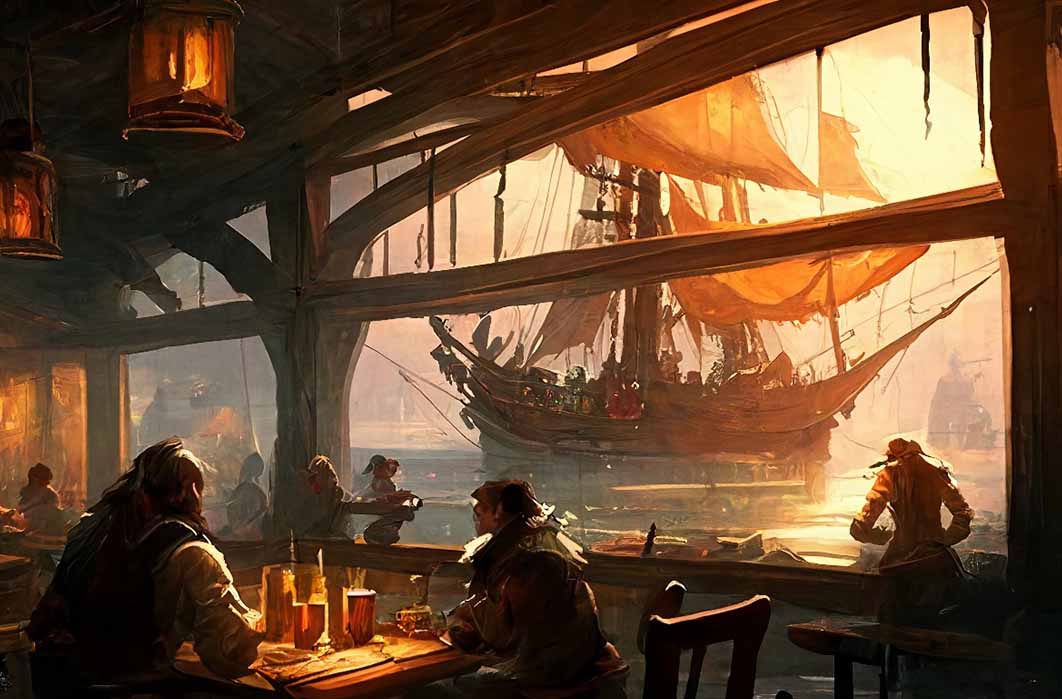
Fine Dining With The Pirates Of The Caribbean
Caribbean cuisine was certainly founded by pirates. Images of filibusters as ragamuffins gnawing bugs in some cell, or perhaps scraping the bottom of some barrel adrift in the Caribbean, hunting for prey, or that of pirates getting drunk in front of taverns in Tortuga, Petit-Goave or Port Royal, Jamaica are popular depictions. Certainly such scenes were part of their lives, as theirs were not an easy life at that time, and revelry and orgies formed an integral part of that vision. But it would be a mistake to believe that buccaneers and privateers did not enjoy the refinements of cuisine.
Father Labat Dining with the Pirates
"We dined very merrily and with appetite. I had had wine and brandy brought, but my slave had forgotten the bread. I did not worry too much. I ate as they did, the buccaneers of the cayo, roasted bananas, or boiled with meat and pork fat, accompanying it all with sauces and chili. Whether the air, the road and the novelty had given me more appetite than usual, or the meat was more tender and appetizing, I ate almost four pounds of it. We slept soundly. Hunger woke us up, more than daylight." These are the words of Father Jean-Baptiste Labat in his best-selling book, Nouveau voyage aux iles de l'Amerique (1742).

Portrait of Jean-Baptiste Labat (1663-1738), a French explorer and historian. Engraving derived from Labat's work, Nouveau voyage aux isles de l'Amerique (1742) (Public Domain)
Father Labat was better suited for cooking than for clergy service, partly because he had a formidable appetite. For naval and piracy history lovers, however, the good Father left an irreplaceable record of the Caribbean islands in the days of the epics of the freebooters. Moreover, Labat's adventures illustrates how that particular geographical sector of the New World was evolving into what is recognized today. Tumult, passions, pulsating and frenetic life, the colors, the tastes - everything seems to have been more intense in the Caribbean than anywhere else in the New World.
Father Labat was sent by the Order of Dominican Friars to the Caribbean in 1694. These were the years at the end of an era of the buccaneers of Hispaniola, the Brethren of the Coast, and the earthquake in Jamaica, at Port Royal, two years earlier, had destroyed much of what the Pope had called the "Sodom of the New World." But piracy had not been eradicated; in fact, new colonies were forming on the horizon, such as the Bahamas or the territories of modern Louisiana (which are always little talked about in history books).
Multitasking Pirates
Those were times when everyone did everything, for example Alexandre Olivier Exquemelin was both a pirate and a surgeon, but also a naturalist and a writer. The great William Dampier was a fierce privateer but also a brilliant hydrographer. To this day his map of the winds of the southern hemisphere is an object of admiration, as he made the voyage around the world, writing in his journals about people, plants, animals and cultures. He was passionate about geology.

William Dampier portrait, holding his book, by Thomas Murray (1697) (Public Domain)
Dozens of the pirate-naturalists left a legacy in the chronicles of the 16th, 17th and 18th centuries. All this testifies to the fact that there was an immense curiosity towards exploration and that therefore it was not only the act of piracy that drove these men (and women), but also a quest for adventure and knowledge.




